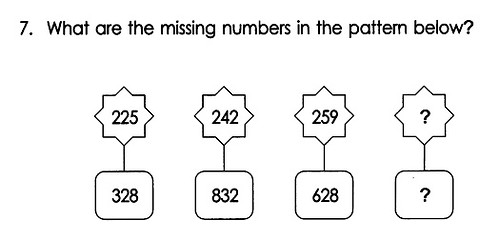Just when I was wondering if my daughter's writing program was taking her somewhere, it all came together in Lesson 11,
Writing a Complete Essay. When she got to Lesson 12,
Evaluating Your Essay, I was feeling pretty good about choosing
Grammar & Writing 6 by Curtis and Hake.
In Lesson 10, she was provided with the thesis statement "I can do things to make the world a better place." After brainstorming for supporting ideas, she finally put it all together in Lesson 11 and by Lesson 12 had come up with the following:
Even though I may be only nine years old, I can make a big difference in this world. There are small things I do that will make the world a better place.
One important thing I do is protect natural habitats. I do not feed wild animals because it disrupts the balance of nature. I pick up my trash and sometimes even clean up other people’s litter. I also try not to disrupt the order of natural habitats by using paths instead of trampling over plant life when I am outside.
When I am inside, there are certain things that I do to conserve natural resources. I turn off lights when I do not need them. I make sure I turn off the faucets when I am finished using them. One other thing I do is keep my showers brief so that I do not waste water.
Recycling is yet another important way to care for our environment because it saves trees, water, energy, and landfill space. I carefully sort out items that can be recycled and place them in a special bin. I try to find new uses for things instead of buying something new. Finally, I use recycled paper and biodegradable products whenever possible.
When all is said and done, taking care of our planet is a huge responsibility but I am able to do things that make the world a better place. I can protect natural habitats, conserve natural resources, and care for our environment by recycling. If I can make a big difference by making small changes, maybe you can too.
This is a huge milestone for my very reluctant writer. She is extremely bright and very verbal, but she doesn't consider herself a writer. This process guided her through each step of the writing process in a way that makes sense. She doesn't just know that she's supposed to write an introductory sentence, topic sentence, supporting statement, etc., she knows what this means. She also understands the importance of transitions, sequence, and the level of detail that come into play in writing an essay. Hake has unraveled the mystery of writing by providing her with an easy to follow recipe. As far as I can see, it's working quite well so far.
I particularly liked the fact that even after Lesson 11 when the essay was quite good, in Lesson 12 she was asked to go back and evaluate her writing critically because writing is always a "work in progress." Mary Hake reminds the young writer "The knowledge that
writing is a process should guide your thinking throughout the construction of an essay." She then goes on to prompt the writer with questions which help the self-evaluation process move along.
As a disclaimer, I have to say that I don't believe the writing component would work as well without the grammar, dictation and journaling exercises. There is a sequence to the lessons and we have been following the suggested schedule. My daughter also consistently outlines and summarizes information in her world history lessons and this has fine-tuned her writing further. Book reports on classic literature are part of her studies as well. Nevertheless, I don't believe she would have been able to write such a logical, clear and well-thought out essay pre-Hake Grammar & Writing.
My next task as her teacher, is to finish reading
Writing to the Point by Kerrigan. From what I understand so far of Kerrigan's approach to teaching writing, it seems to fit in very well to the Hake approach to teaching a much younger writer.
Who knew that learning to write could be so logical and presented so very clearly.
Grammar and Writing
Christie Curtis & Mary Hake








